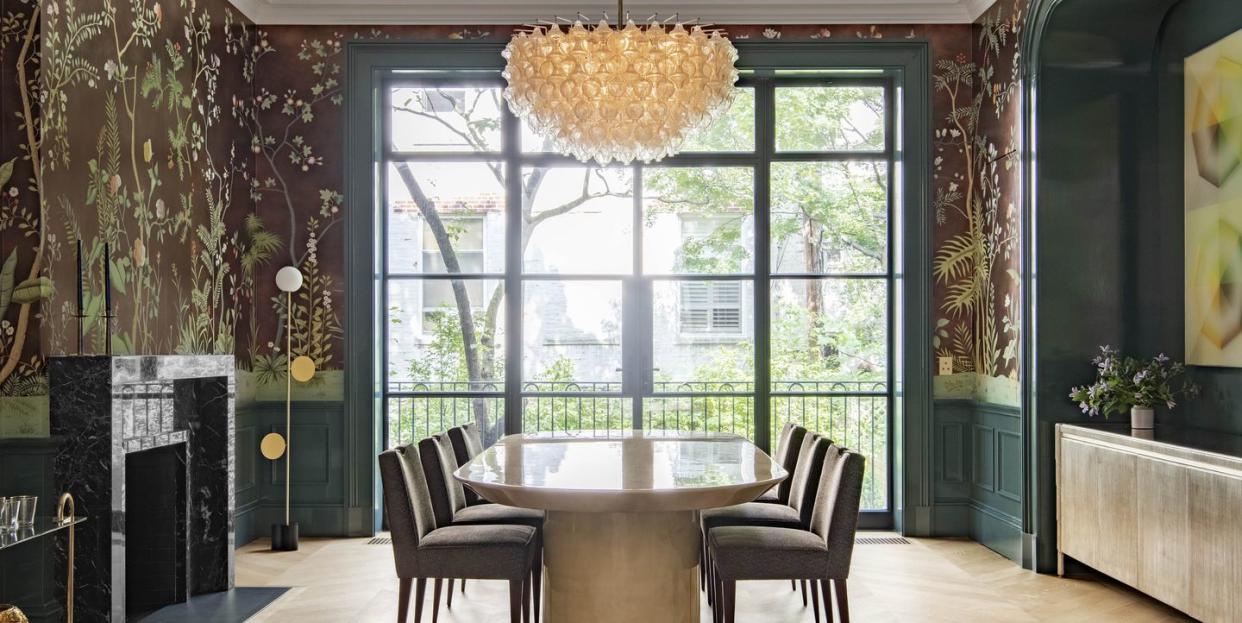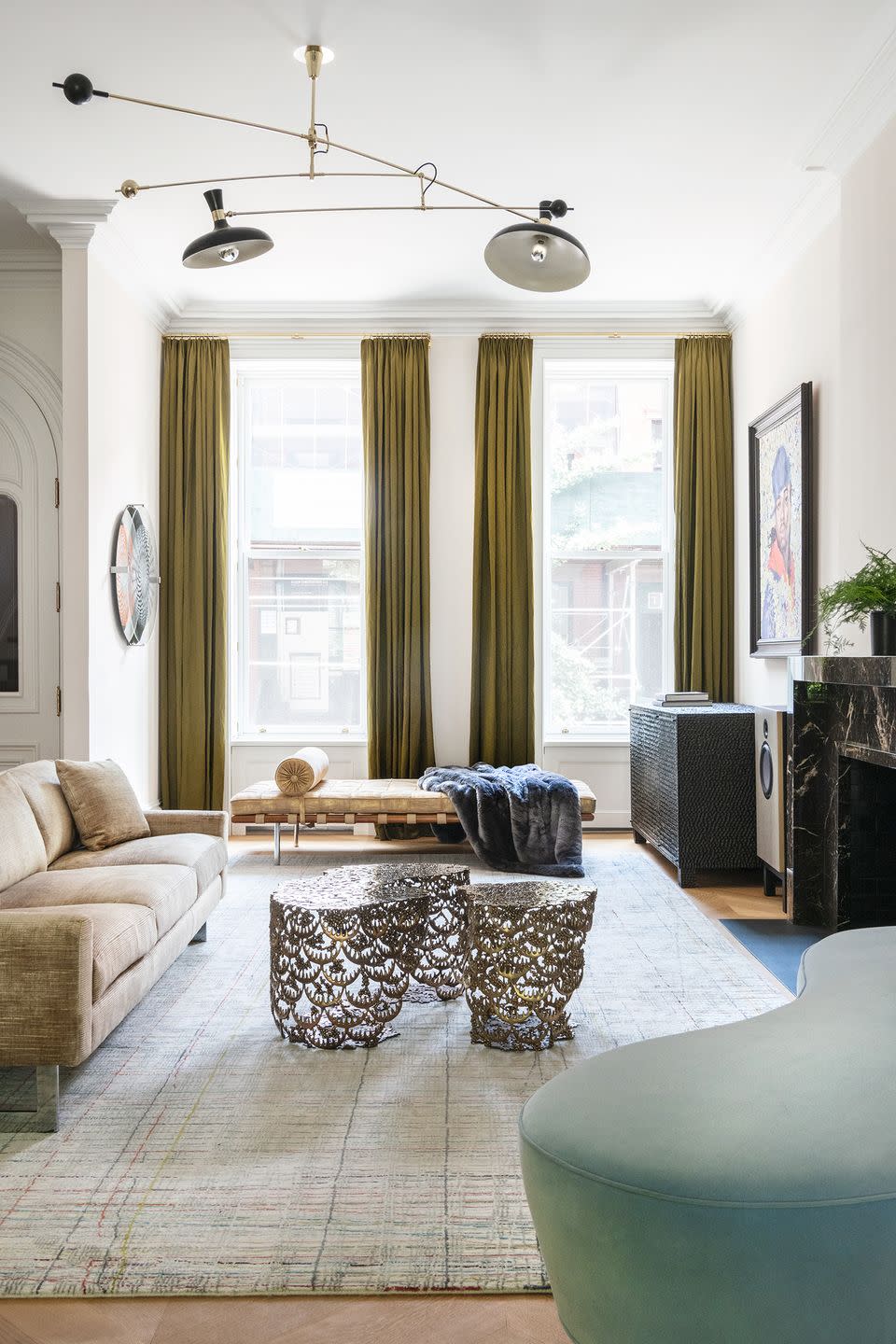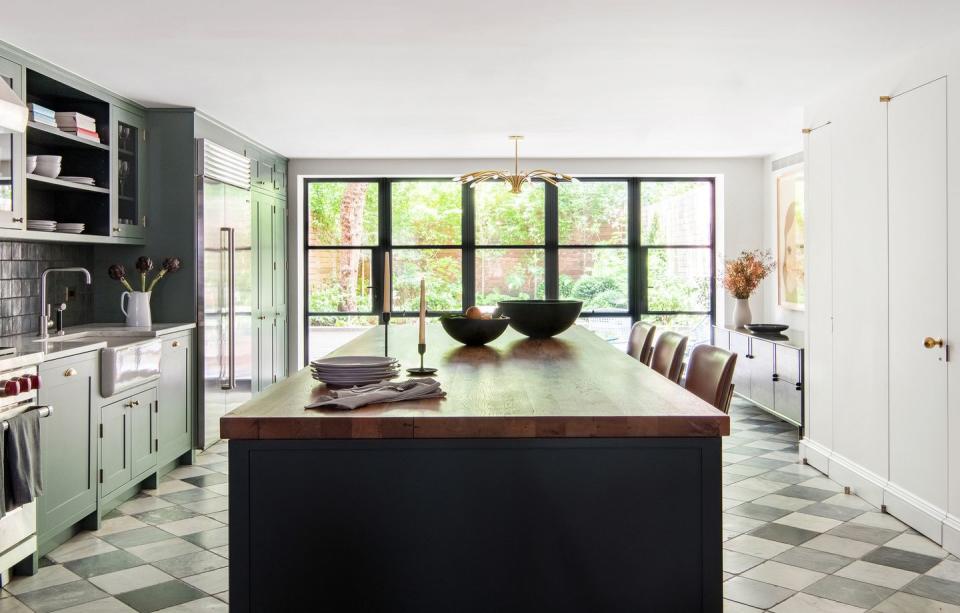Famous Guitarists Play at Parties at This Music Executive’s Brownstone

Over the course of her career, Brooklyn-based architect Elizabeth Roberts has defined what classic brownstone design looks like in the borough. Here, she reveals her inspiration and approach to creating a Brooklyn Heights home with enough glamour to lure a family away from their Manhattan lifestyle.
ELLE Decor: You’ve done more than 40 brownstone renovations. How was this project different than the others?
Elizabeth Roberts: Each project is informed by our clients. It’s important to understand the homeowners’ goals before we’re even hired. In this case, Julie Greenwald, COO of Atlantic Records, and her family were moving from a loft in Manhattan to a townhouse in Brooklyn. I wanted Julie to love Brooklyn and for this house to be undeniably the right place for her and her family.
So what were those goals in this case?
Equal thought and attention needed to be given to both entertaining large parties with loud music and lots of seating areas, and meeting the needs of a family that cooks and eats meals together. I needed to think about how the living room would work for parties of 30 to 40 people—and the possibility of world-famous guitarists playing solos in the corner—but also how Julie cooks with her family and where she needed things stored. It was fun creating an environment for a woman who works hard, loves to entertain, and, most of all, loves her family.

There are curtains and a stair runner in ombré and colorful wallcoverings from de Gournay, Hermès, and Osborne & Little. How did you decide to use these colors and patterns?
Florals and color were part of the process of Julie moving away from loft living in downtown Manhattan and into a townhouse. She wanted a glamorous, historic home that felt modern and vibrant, never dowdy. The florals, decorative details, and color needed to be saturated and lively in order to feel current and bold.
What was your favorite part of working on this brownstone?
I particularly love the parlor level. It is designed entirely for entertaining and was a departure for me from designing for family living. There are no TVs or movie projectors anywhere on this floor, and the dining room was conceived for elaborate dinner parties only. There was a combination of being very opulent and leaning toward historic details and proportions. That was fun—to work on lavish, fussy details, knowing there would be such life in this house.
Your renovation projects often have modern touches while preserving original details. How do you balance the past and the present?
I like to think that I’m “rooting” for the house. These houses deserve another 150 years of living.
What’s the next big trend in brownstone design?
I think people are moving toward more neutral and quiet townhouses—toning down a bit of the overly ornate decorative details.
Which trend would you like to see come to an end?
Arches, I hope.

What challenges do you face when designing brownstones?
I try to make them more modern, light, and bright.
Do you think the passion for brownstones will ever die down?
No. They’re limited in quantity and built to last forever.
What’s next for you?
Several ground-up projects outside New York City, and we’re working on several old houses outside the city, too. I’m also actively working toward more hospitality projects—we’d love to design a hotel or a larger multifamily residence. And we’re dreaming up some ideas for the common spaces for an upcoming exhibition at the Brooklyn Museum and planning some custom furnishings that will debut during NYC Design Week in the spring.
You Might Also Like

